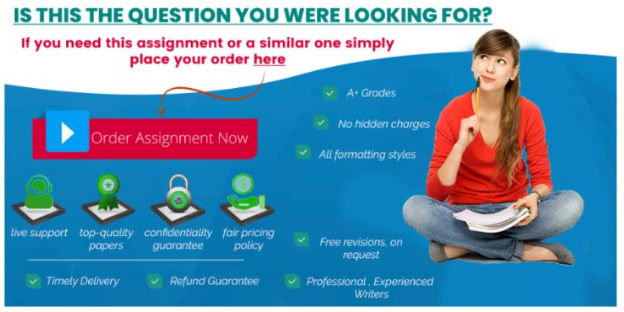Criminal Justice
Assignment Week 6: Qualitative and Quantitative Article Reviews
Instructions
Week Six Assignments
The assignment for week six will help you develop your critical eye when it comes to reading the literature. The goal is for you to use this as an opportunity to identify the research design and methods that are being carried out by the authors. This skill will serve you moving forward as it will allow you to draw from the literature for your own research moving forward. Looking to the literature for clues can be helpful when it comes to designing your own research as you move forward in the program.

Select two articles from the list below—ONE FROM THE QUALITATIVE LIST AND ONE FROM THE QUANTITATIVE LIST and in two pages double-spaced (per article) address the following:
- Include the full reference for the article using the writing style specific to your program on the title page.
- Criminal Justice = APA,
- International Relations National Security Military Studies and Intelligence Studies = Chicago.,
- Since multiple writing styles are in use within this course, on your title page please note which style you are using within your assignment. This will help me cater my comments to the style you are using. The style you use needs to be the one that is used within your program of study.,
- State the main goal(s) of the study,
- Summarize the research design and discuss the research method(s) used to answer the research question or assess the hypothesis.,
- Summarize the results of the study.,
- Discuss the advantages and disadvantages of the study’s research design.,
- Provide a discussion on how the study can be moved forward. For example how can the methods be used in your own research proposal? In what other research might these methods apply?, Include two well-phrased research questions that could be used in follow-on studies to the one reviewed.
Format: You should have one-inch margins on all four sides of your papers; your title page should include your name and date; you should use 12-point times new roman font throughout.
Things to keep in mind:
Avoid using the first person in formal writing and instead, write with an academic voice throughout. Academic voice is usually written in the third person (he, she, it), not the first person (I, we) or second person (you). Be consistent in voice and person. See Grammar Girl, “First, Second, and Third Person,” Quick and Dirty Tips for Better Writing, January 20, 2011. Furthermore, the academic voice avoids abbreviations, contractions, jargon, and slang. Even informal academic discussions are more formal than casual chats among friends. Criminal Justice
The body of your work should be made up of no more than 20% direct quotes.
Note: In the case of a broken link each of these articles can be found either within the APUS online library or on the open web.
QUALITATIVE ARTICLES
Criminal Justice Articles
Galanek, Joseph D, Janelle Duda, Daniel J. Flannery, Jeff Kretschmar, and Frederick Butcher. 2016. “Fugitive Safe Surrender: A Qualitative Analysis of Participants’ Reasons for Surrender and Anticipated Outcomes to Inform Program Evaluation.” Journal of Qualitative Criminal Justice & Criminology 4, no. 2 (November): 161-187.
Staton, Monte D. and Arthur J. Lurigio. 2016. “Explaining Similarities and Variations in Program Structures and Professional Roles in Midwestern Mental Health Courts.” Journal of Qualitative Criminal Justice & Criminology 4, no. 2 (November): 188-216.
Dittman, Layne, and Jurg Gerber. 2016. “Framing Legitimacy: A Qualitative Analysis Examining Local Print-Media Portrayals of an Immigrant Family Detention Center in Texas.” Journal of Qualitative Criminal Justice & Criminology 4, no. 2 (November): 217-243.
Martinez-Prather, Kathy, Joseph M. McKenna, and Scott W. Bowman. 2016. “The School-to-Prison Pipeline: How Roles of School-Based Law Enforcement Officers May Impact Disciplinary Actions.” Journal of Qualitative Criminal Justice & Criminology 4, no. 2 (November): 244-272.
Emergency Management and Disaster Preparedness Articles
Khan, Yasmin, Tracey O’Sullivan, Adalsteinn Brown, Tracey Shannon, Jennifer Gibson, Mélissa Généreux, Bonnie Henry, and Brian Schwartz. “Public Health Emergency Preparedness: A Framework to Promote Resilience.” BMC Public Health 18, (2018). doi:https://doi.org/10.1186/s12889-018-6250-7. http://ezproxy.apus.edu/login?qurl=https%3A%2F%2Fwww.proquest.com%2Fscholarly-journals%2Fpublic-health-emergency-preparedness-framework%2Fdocview%2F2158579777%2Fse-2.
Sumarno, S., T. Nainggolan, R. Murni, R. G. Erwinsyah, and L. Andriyani. “Synergy between Disaster Preparedness Area Program with Local Institutions for Community Disaster Preparedness.” IOP Conference Series.Earth and Environmental Science 1027, no. 1 (05, 2022): 012018. doi:https://doi.org/10.1088/1755-1315/1027/1/012018. http://ezproxy.apus.edu/login?qurl=https%3A%2F%2Fwww.proquest.com%2Fscholarly-journals%2Fsynergy-between-disaster-preparedness-area%2Fdocview%2F2669583508%2Fse-2.
Intelligence Studies Articles Criminal Justice
Stime, Britta. 2017. “Counterinsurgency Agent Networks and Noncombatant-Targeted Violence.” Intelligence and National Security 32, no. 1: 107-125.
Thomson, James. 2016. “Governance Costs and Defense Intelligence Provision in the UK: A Case-Study in Microeconomic Theory.” Intelligence and National Security 31, no. 6: 844-857.
Nussio, Enzo and Kimberly Howe. 2016. “When Protection Collapses: Post-Demobilization Trajectories of Violence.” Terrorism and Political Violence 28, no. 5: 848-867.
Rabinowitz Or and Nicholas L. Miller. 2015. “Keeping the Bombs in the Basement: U.S. Nonproliferation Policy toward Israel, South Africa, and Pakistan.” International Security 40, no. 1: 47-86.
International Relations and Conflict Resolution Articles
Ide, Tobias. 2015. Why do conflicts over scarce renewable resources turn violent? A qualitative comparative analysis. Global Environmental Change 33 : 61-70. http://http://dx.doi.org.ezproxy2.apus.edu/10.1016/j.gloenvcha.2015.04.008
Abdulkadir, Rahma, and Caroline Ackley. 2014. “The Role of Shari’a-Based Restorative Justice in the Transition from Armed Conflict to Peacebuilding: Do Somalis Hold the View That the Restorative Justice Aspects within Qisas Offer a Solution?.” Northeast African Studies 14, no. 2: 111-131. International Security & Counter Terrorism Reference Center, EBSCOhost (accessed January 3, 2017). http://search.ebscohost.com.ezproxy2.apus.edu/login.aspx?direct=true&db=tsh&AN=98799055&site=ehost-live&scope=site
Oyewole, Samuel. 2016. The fate of hostages: Nigeria’s conflict theatres in comparative perspective. African Security Review 25 (2): 193-207. http://www.tandfonline.com.ezproxy2.apus.edu/doi/full/10.1080/10246029.2016.1155466
National Security/Military Studies Articles
Jones, David and M.L.R. Smith. 2010. “Beyond Belief: Islamist Strategic Thinking and International Relations Theory.” Terrorism and Political Violence 22, no. 2: 242-266.
Kaldor, Mary. 2013. “In Defense of New Wars.” Stability: International Journal of Security & Development 2, no. 1.









